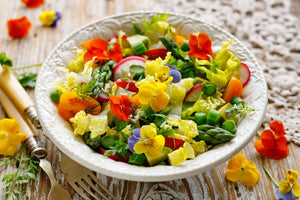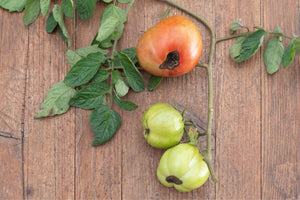Topics
Easily Grow Petunias from Seed for Picture-Perfect Flower Beds
PetuniasPetunias are lovely flowering annuals that are easy to grow and are very rewarding. They are resilient enough to thrive even in poor soils. They’re also nectar-rich, making them extremely attractive to hummingbirds and butterflies. Petunias are adaptable and well-suited to both in-ground and container gardening. Many garden centers sell these popular plants in spring when they’re in their full glory. The savvy gardener knows how to grow dozens of petunia plants from seed for a fraction of the cost of one store-bought plant. Let’s see how.

Planting Petunia Seeds
For early blooms, you’ll want to start your seeds indoors early, about 8-10 weeks before the last frost date. However, you can also sow directly outside once soil temperatures reach 70°F.
Petunia Seed Germination
Seeds should be spread on the surface of the soil or growing medium and pressed in firmly for good soil contact. Petunia seeds need light to germinate, so don’t bury the seeds in the soil. To prevent dislodging the seeds, water by misting.
Petunia Seedlings
In one to three weeks, you should see the first green shoots of your petunia seedlings appear. Provide plenty of light for the seedlings to grow, and keep the soil around room temperature (70-75°F) and evenly moist. Once your young plants have at least three true leaves and are a few inches tall, you can harden them off and transplant them outdoors.

Finding the Right Spot
Petunias need good sunlight to grow and are heat tolerant, so find a sunny spot with well-drained, fertile soil and space the plants 12” apart. These simple flowers are especially attractive in hanging baskets or trailing out of containers or edges or borders for a dramatic look.

Ways to Get More Petunia Blooms
Petunias will keep flowering all summer long if given just a little bit of TLC.
Provide plenty of light
Another reason to choose a sunny spot for your petunias is to get more blooms. Petunias love the sun, which provides more energy for flowering. You’ll also get more butterfly visitors if you plant in full sun.
Water as needed
Keep your petunias well-watered but not soggy. Remember that smaller containers hold less soil and may need to be watered more frequently than larger containers or in-ground gardens. Petunias growing in pots may need to be watered daily in the heat of summer.
Use the right fertilizer
A balanced fertilizer or a fertilizer with a higher phosphorus content will encourage more flowering. High nitrogen will encourage more leaf growth, so avoid fertilizers that start with a higher first number.

Deadhead and prune as needed
Remove blooms after they fade so the plants don’t turn their energy to setting seed. If your plants start looking leggy and scraggly, prune the branches with sharp pruning shears. Don’t trim more than ⅓ of the plant, and it should recover well and look fuller. You’ll also encourage more blooms.
Growing your own petunias from seed adds vibrant color and life to your garden. It is also a deeply rewarding and enjoyable experience. As you nurture your seeds into full bloom, you'll be delighted by the burst of colors and the visits from bees, hummingbirds, and butterflies. The next time you find yourself in appreciation of petunias, don’t wait for the next sale at your big box store. Gather your seeds, prepare your soil, and get growing!
Written by Teresa Chandler
Popular Posts
-

Pretty Delicious! Edible Flowers to Plant in Your Garden
-

Why Blossom End Rot Happens and How to Prevent It







Leave a comment